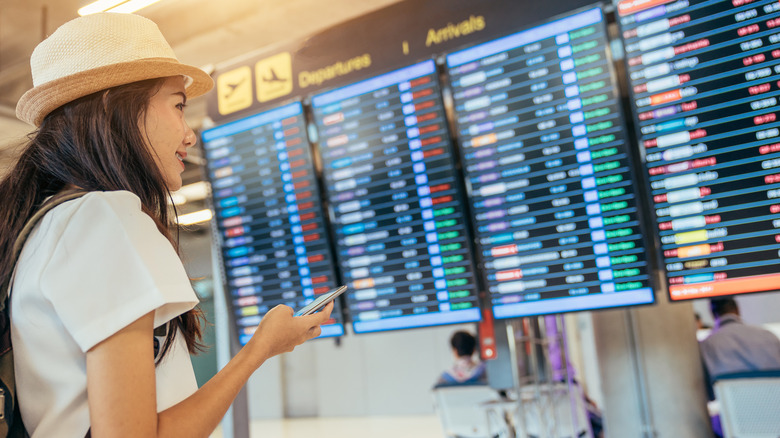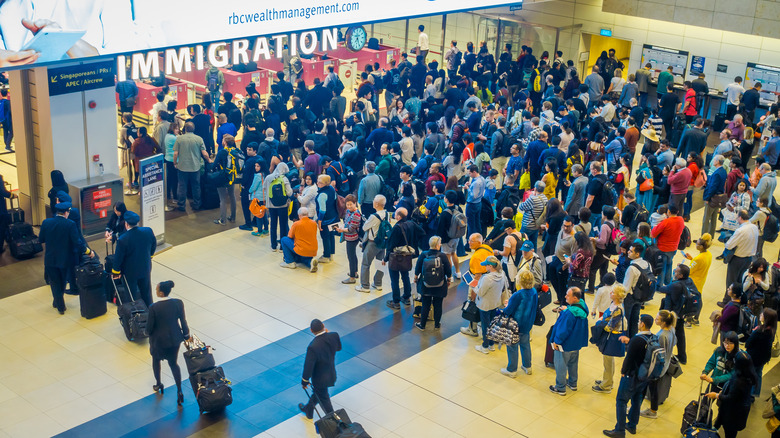How Much Time Should You Leave Between Connecting Flights?
It's one of traveling's greatest gambles — planning flight itineraries with minimal time between connecting flights. Admittedly, sometimes that brisk walk through the airport is in the lockstep swagger of perfect planning. Even if traveling internationally, your well-practiced customs visit and security screening are deliberate, quick, and without incident.
Other times, your first flight is delayed for 15 minutes. Now your time window to make your connecting flight, which was tight yet reasonable, has shattered around you. After landing to meet your connection, you nervously count the minutes while taxiing and try to remember the best route to the air tram in Dallas/Fort Worth. After all, you cobbled together one-way flights using multiple airlines, so now you'll need to get from Terminal A to Terminal E in 24 minutes. First-class passengers are taking their first-class time, and your connection is departing right on schedule. You might as well stretch because you're about to run the DFW gauntlet.
When considering how much time you'll need in between connecting flights, it's typically better to lean on the side of caution. According to a recent study by Value Penguin, around 20% of domestic flights were delayed in the first five months of 2022, leading to the scenario above. Things happen when flying, and sometimes, you get dealt a bad hand.
Be smart when creating your own itinerary
Commercial airports around the world adhere to a policy called minimum connection time (MCT), per AirTreks. Essentially, MCT is the least amount of time an airport deems that an able-bodied person could reasonably get from their arriving flight to their connecting flight.
To determine the MCT, airports consider the size and layout of airports, security policies, and whether the connecting flight is domestic or international. Normally, airlines and online travel agencies (OTAs) do not create flight itineraries with layovers that fail to meet these minimum connection times.
However, if you create your own itinerary using one-way or open-jaw flights, then it's your responsibility to plan your connecting flight times. If these times run afoul of the MCT, then airlines have no responsibility to assist you. This is especially true if your itinerary uses different airlines. Why would one airline help with your missed connection due to another airline's flight (and your risky planning)?
You'll appreciate the extra time when traveling abroad
Per Alternative Airlines, you should leave at least an hour between domestic flights and two hours for flights that connect internationally. The extra hour for international connection is typically warranted.
Of all the lines you'll wait in at airports, some of the busiest and hardest to predict are customs lines and international security lines. You may spend an hour and a half of those two allotted hours dealing with customs.
Domestic flights are a different story. With at least an hour to catch a domestic connection, you should be fine, especially if you stay "air-side." You just don't need to go through any security.
Finally, if you do find yourself sweating on DFW's tarmac because you're absolutely sure you're going to miss your connecting flights, there are a few things you can do. Plead your case to the flight attendant. They may allow you to deplane before everyone else. You can also research the best route to your next gate while waiting. Every second may count, but don't fold your hand prematurely.


